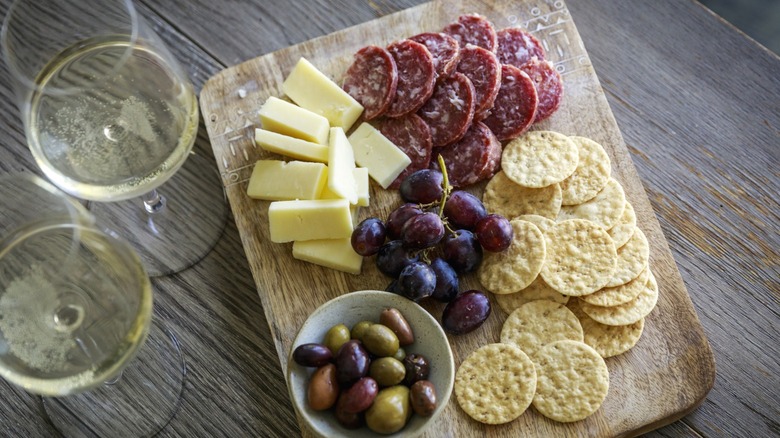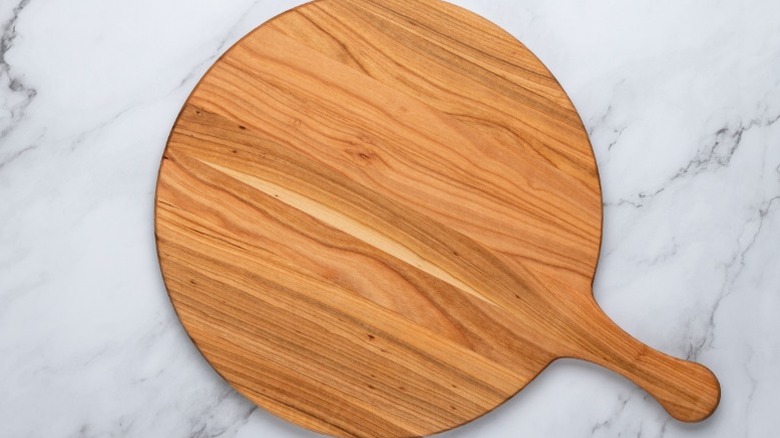The Common Mistake You're Likely Making With Charcuterie Boards
An assortment of decadent cheeses, ranging from sweet and mild to sharp and piquant. Neatly sliced disks of meat, perfect for placing on a cracker and topping with the aforementioned cheese. Handfuls of salty olives in a little dish on the side. There's nothing like a good charcuterie board, is there? The only thing you can do to make it better is by choosing the right board in the first place. You might think it's just a matter of picking any suitable-looking piece of wood you can find, but choosing the wrong board is a common mistake: There are plenty of variables to consider, from aesthetics to size.
Some of you might see this as overly hoity-toity. You've got a perfectly good cutting board in your cupboard — can't you just use that instead? And sure, you certainly can: It'll get the job done, and if you're not overly fussed about aesthetics, it's a totally respectable choice. But doesn't that diminish the fun of charcuterie? The whole point is to break out your finest meats and cheeses and get a little fancy with it, and a nicely rustic wooden board really can elevate the experience.
Just a word of warning: While you can use a cutting board for charcuterie, you absolutely cannot use a charcuterie board for cutting. They're usually made of softer wood than their sturdier counterparts, and being overzealous with your knife can wreck them quicker than you might think.
Charcuterie boards are a matter of taste — just be sure to respect wood
So what should you keep in mind when you're picking out a good charcuterie board? Well, it all depends on what you value when you're entertaining. Are you someone who likes to host twenty people at once for holiday parties? Then you might want to pick out a good, hearty slab of wood, the kind that looks like the BFG could use it as a ping pong paddle. Are you only likely to have a half-dozen people in your house at most? Then you can go with a relatively more modest board. And if you're bringing a charcuterie board on your plane, it goes without saying that you should get a particularly compact board.
As for material, you'll want something reasonably sturdy. It's important to avoid big, ugly cut marks in your board; not only is it unsightly, but it can cause sanitary issues down the line. As it turns out, bacteria will be happy to make those marks their new home, which can put a real damper on the special new brie you got from the cheesemonger. (Be sure to follow these other charcuterie safety tips, as well.) Some good choices for wood include walnut, olive, cherry, and maple. Heck, if you want to really have fun, you can turn your charcuterie board into a nacho platter.

